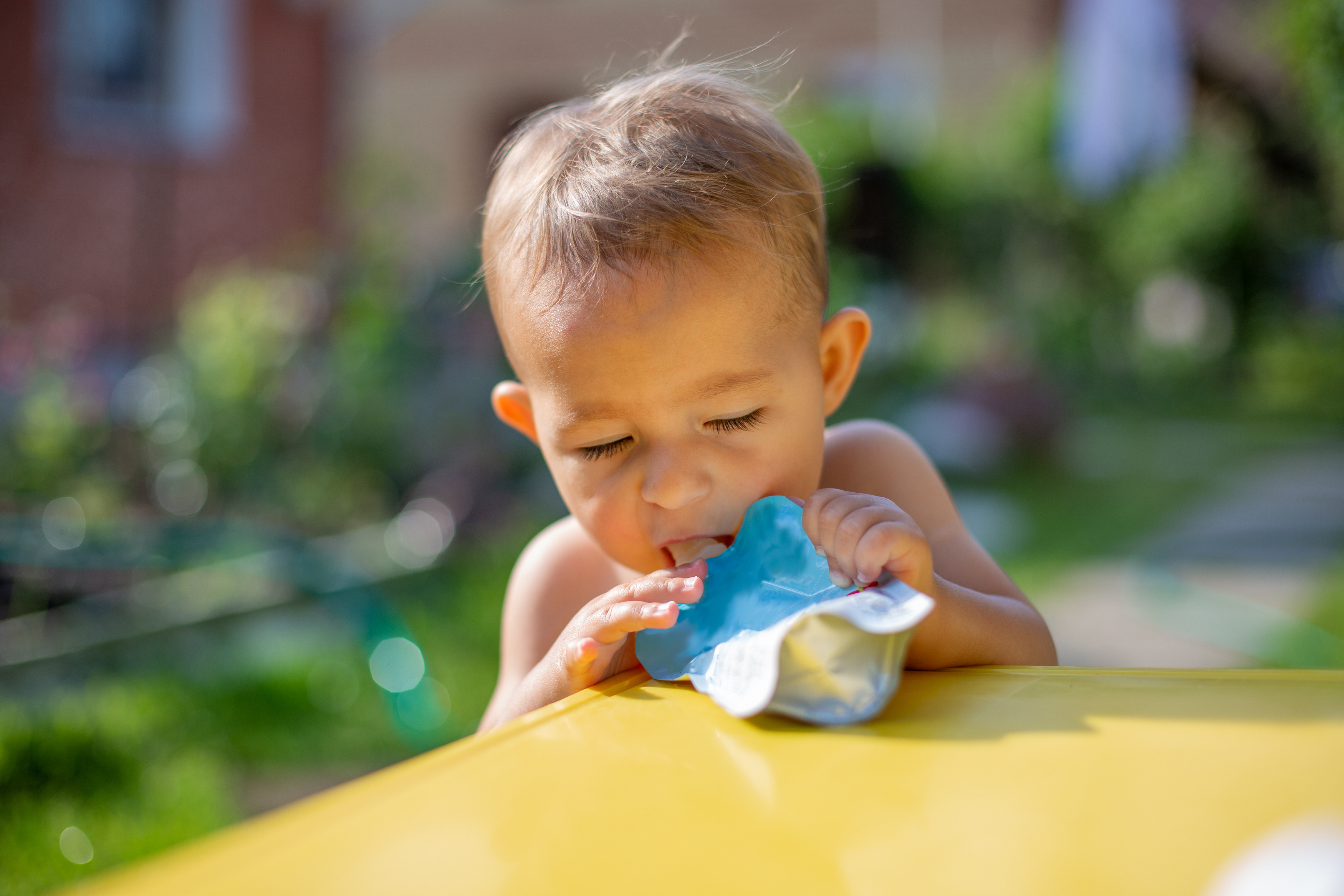We’ve all seen those babies/toddlers sucking on pouches and have sworn to ourselves that won’t be us, but the reality is that pouches are unavoidable for practically any caretaker. But, if your child is devouring a kale pouch, does that mean they actually will develop an affinity for kale? What about those veggies muffins?
We spoke with Alexandra Bandier, MS, RD, CDN, a registered dietitian who specializes in prenatal, postnatal and pediatric nutrition about all things pouches to find out the dos and donts.
Momtastic: What do you think about parents relying heavily on pouches in the first six months of starting solids? Many parents assume because their child likes a kale pouch, they like kale – but is that true?
Alexandra Bandier: I definitely understand the desire to rely heavily on pouches during the first six months of starting solids – they are convenient, not messy, and contain vegetables. However, I recommend considering pouches more as a food you use “in a pinch” vs. a staple of your child’s diet. Most pouches are very sweet. They can contain vegetables, but almost always the vegetable is overshadowed by fruit so that the overall taste of the pouch is sweet. Kids need exposure to a variety of flavors early in life – particularly bitter flavors – in order to shape their palette to be more accepting of these flavors as they get older. Kale in a pouch ends up tasting sweet and not tasting like kale, which is bitter. As a result, liking kale in a pouch does not usually translate into liking kale itself. I would encourage parents to offer whole foods as often as possible.
Another consideration is that the mechanism of drinking from a pouch does not teach kids how to eat (using hands, utensils, etc.). So, if you are using a pouch at home, I do encourage squeezing the pouch out into a bowl.
As an aside, not all pouches are created equal! Serenity Foods is my brand of choice.
Momtastic: Many parents stick with pouches and puree because their child will eat more than if they eat “real food” but is that actually important?
Alexandra Bandier: Kids need a lot of exposure (repetition with foods) to become comfortable enough to eat them. Some estimates say kids need about 10-15 exposures with a single food before they can form a true preference about that food. Of course, this can be extremely frustrating for parents! I recommend offering whole foods as often as possible and being patient with your child as they learn to eat and explore. I reserve pouches as a “once-in-a-while” type of food.

Momtastic: Home-made healthy muffins and pancakes are also popular. What are your thoughts? Are these priming kids to crave baked goods?
Alexandra Bandier: I’m less concerned about a (homemade) veggie muffin, for example – especially if it’s made with no sugar and packed with vegetables. This is different than a blueberry muffin from Starbucks, which is loaded with sugar. For children who are very picky eaters, a veggie muffin may be the only way they are getting vegetable intake. If healthy muffins and pancakes are offered sometimes and other types of breakfast foods are offered other times (for example – eggs, oatmeal, lentil cakes, smoothies, fruit, yogurt), I think that’s a good combination.
Momtastic: For parents that are busy and really struggling to find real food/meal ideas they can make for their child do you have any suggestions?
Alexandra Bandier: Parents are so busy and preparing food for their kids is not always a realistic option. Companies like Little Spoon and Nurture Life have a great selection of whole foods (already cooked) that can be delivered to your home.

Momtastic: Any suggestions for parents of children 6-12 months who feel like all their kids do is throw food?
Alexandra Bandier: Throwing food is a common way kids like to test us at the table. With my clients and my own child, I’ve found that the quickest way to have this end is to set a boundary and be consistent with that boundary. For example, the first time your child throws food you could give them a warning saying, “When you throw food, it tells me you aren’t hungry so if you do it again, I’m going to end the meal.” And then when they throw food the second time, you follow through and end the meal calmly. They then have to wait until snack time for their next eating opportunity. This could be 1-2 hours after the meal and while they may be very cranky, it is safe to have them wait this amount of time to eat again. For children who are pre-verbal, the action of ending the meal after throwing is something they understand, and it reinforces that food is not meant to be thrown.








